Using a local SIM card in India can cost $3 to $7 a month and save you hundreds of dollars.
However, it’s more difficult to get one in 2024, and they don’t work for every type of foreign phone.
That’s why I’ll share what I’ve learned about getting SIM cards after traveling to dozens of Indian states over 5 years AND wasting +$100 on my phone on my first vacation.
1. Easiest Option: Use an eSIM
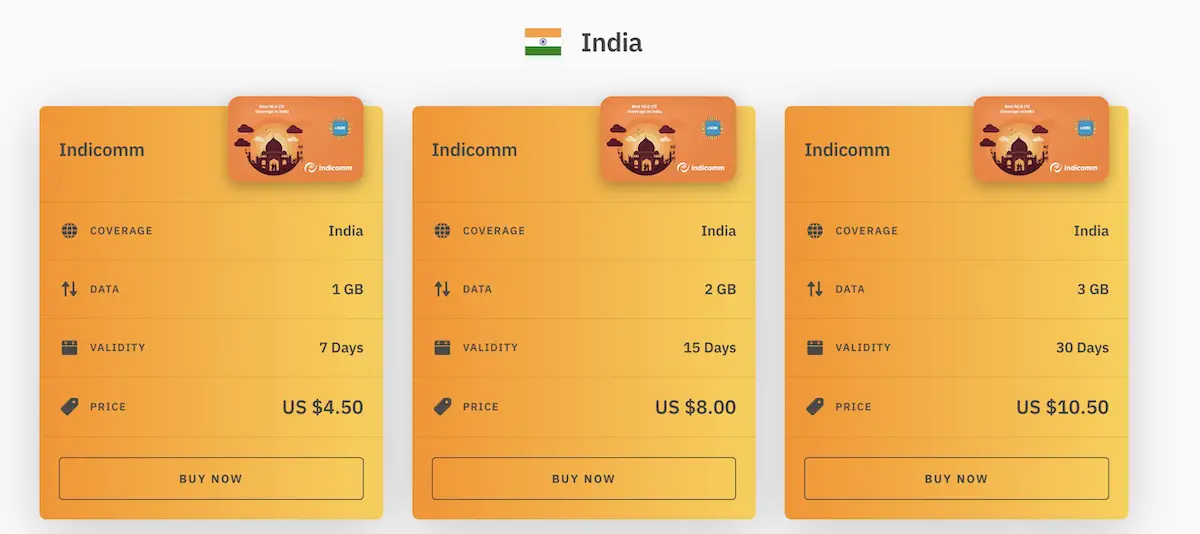
Pros:
- Can buy one in your home country
- Can be connected right when you land in India
- Uses Jio, a strong network
Cons:
- Activation doesn’t always work
- The signal isn’t the best
- You only get data and not a phone number
The easiest way to connect is to buy an eSIM from a company like Airalo.
You can pick one up for less than $10 so that when your plane touches down in India, you can be connected. This is very helpful if you’re arriving at any airport other than Delhi because you can ensure you’re connected to the internet while driving to your hotel in a taxi. You don’t want to just rely on Indian taxi guys without some insurance!
On my first trip, the taxi driver was heading the opposite way at 3 am, and if I hadn’t had a SIM, things wouldn’t have been pretty.
However, an eSIM should only be your backup.
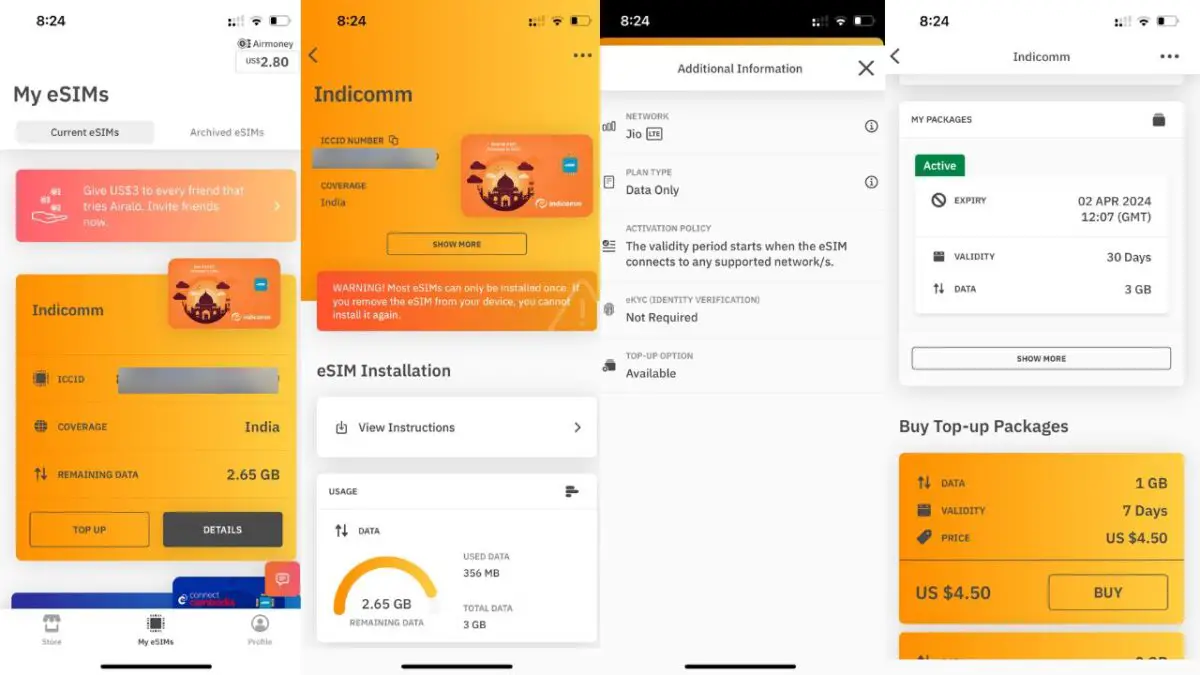
You only get data, so you can’t get a phone number. You can’t get OTP numbers or fill out certain forms like C-Forms. There are many things you’ll want an Indian number for.
Plus, it’s more expensive than a local SIM card. You’ll only pay $4.50 for 1 GB; if it’s just a backup, that can last a week or so. But if you need a hotspot to work or are watching videos, you could burn through that in a day.
A local SIM card usually offer 1.5gb per day and it’s only $7 for 28 days.
Finally, I’ve had trouble activating my eSims. I usually try in the airport right before I take off when I still have wifi or a cell signal, but I’ve arrived, and it hasn’t worked. You really need to follow the directions carefully, although Airalo does a decent job walking you through them step-by-step.
Aside from SIM cards, here are 17 things that are cheaper in India.
2. Best Overall: Get a SIM Card at Delhi Airport
Pros:
- Cheap
- Conveniently located in the airport
- Takes 10-15 minutes
- You get a phone number and data
Cons:
- Can be crowded
- Only option is Airtel
- Might be too jetlagged to bother
You will need: Passport and visa.
This is the best overall option, and since most tourists fly into Delhi, you should do this.
As you leave the airport, there’s an Airtel stand in the outer room before the taxis, where you can get a SIM card. It takes about 10 minutes. You’ll share your passport and visa, and they’re used to working with tourists, so they’ll walk you through the process step-by-step (this can be an issue with other solutions).
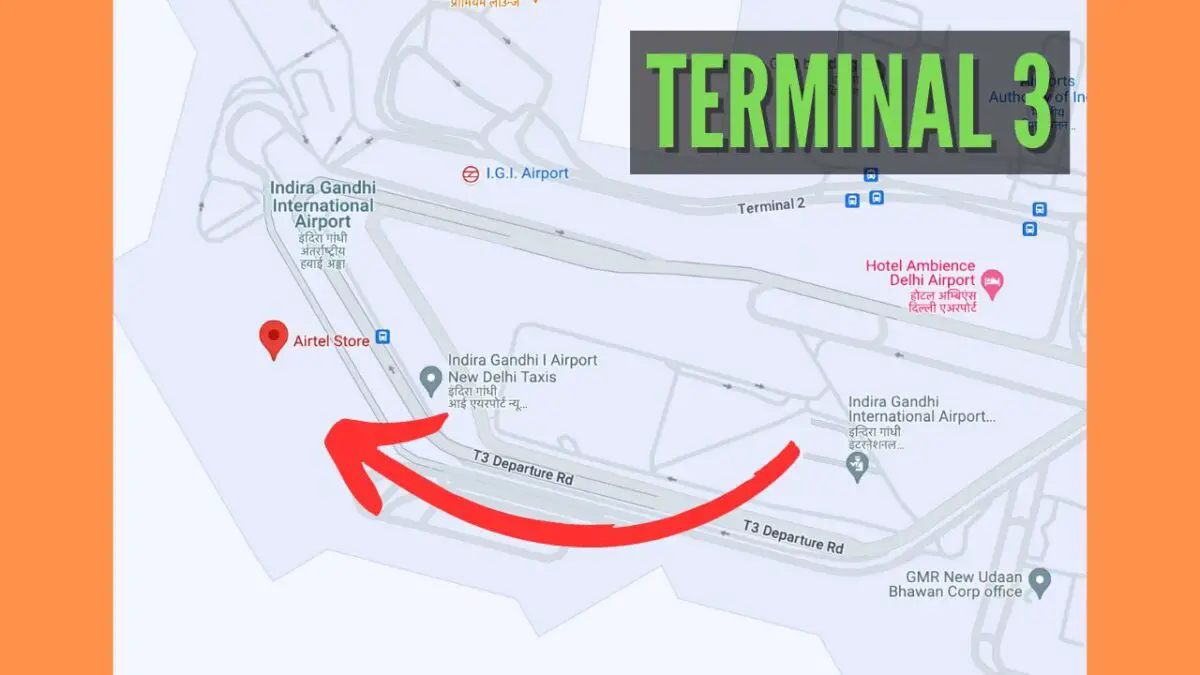
Airtel is one of the best options so you’ll have good coverage wherever you go. Plus, you won’t have to get disconnected if you go to a new state, unlike with Vodafone.
Airtel stands are everywhere, so when you need a recharge in 28 days, you can go almost anywhere, pay another $3 to $7, and you’re good to go again.
These SIM cards last for 3 months for tourists, so it’ll be all you need for most everyone.
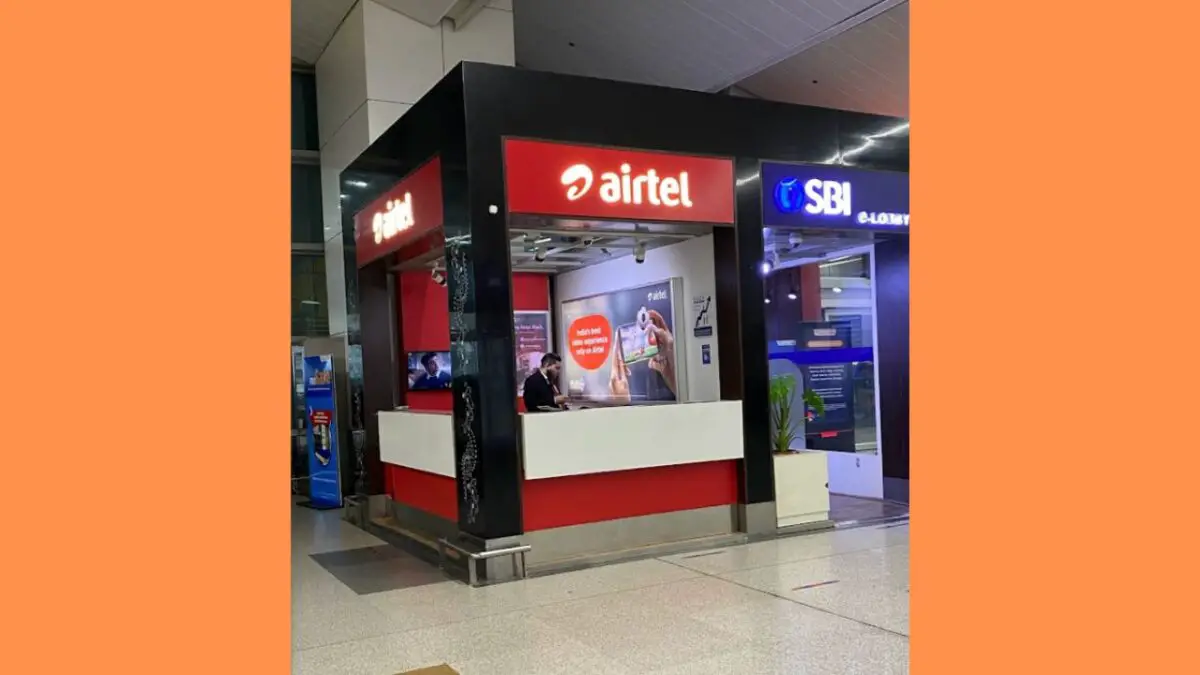
However, I’ve often skipped these stands because I was too jet-lagged to care, and I’ve usually regretted it, though.
Plus, it can get crowded, even at night, since this is where many tourists stop.
They’re so good though and pushing people through it’s worth stopping even if it’s crowded and you’re tired. Trust me, you won’t regret having a SIM card asap at these prices.
If you’re American, here’s how you can use your American phone in India.
3. Get SIM Cards at Random Cell Phone Shops

Pros:
- Cheap
- Takes 30 minutes
- You get a phone number and data
- More options for SIM companies
Cons:
- Have to ask around to find one, and it can take awhile
- Need an Indian reference number
- Takes a little longer
You will need: Passport, visa, and Indian reference number.
I’ve bought SIM cards at random cell phone shops in Tamil Nadu, West Bengal, Ladakh, Goa, and more. It’s the same type of SIM card you’d get at the Airtel store in the Delhi airport, so you’ll have a phone number for the same price.
You can look for small signs on cell phone shops advertising the main companies: Airtel, Vodafone (I think it’s called Vi now), and Jio.
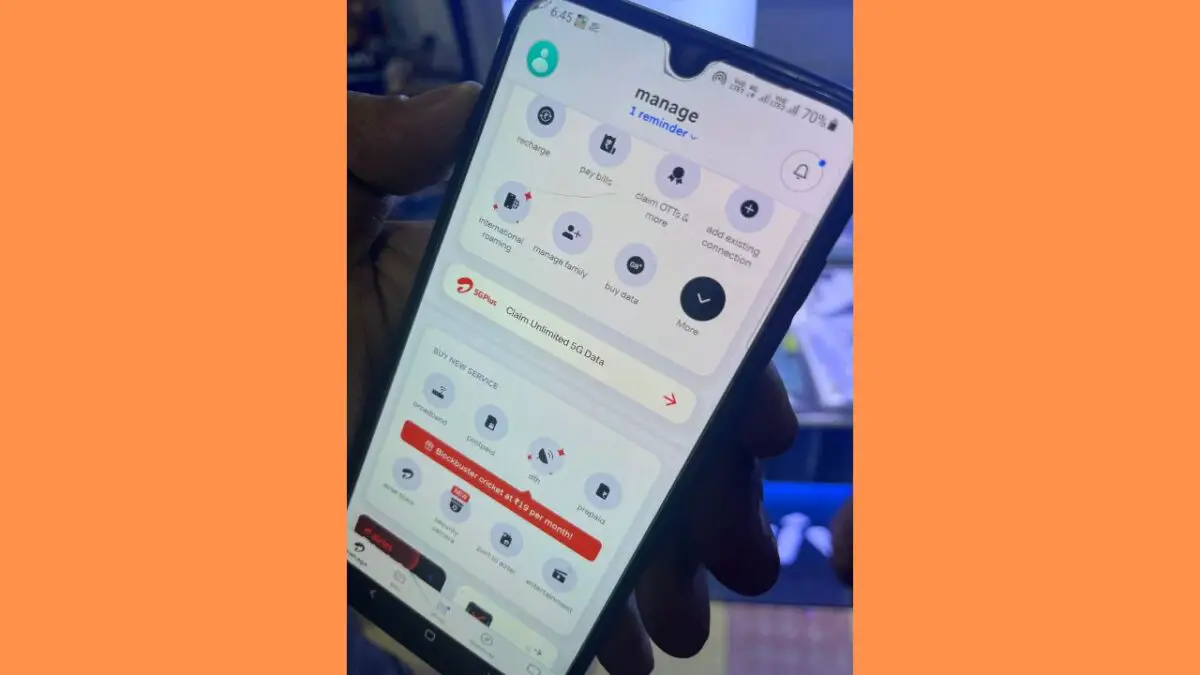
You’ll mostly find these in tourist areas, and they’ll be well-versed in what you need to do. Bring your passport and visa, and they’ll do the paperwork. It can take 30 to 60 minutes. You’ll pay 500 inr ($7) for 28 days, then you can recharge it anywhere.
These SIM cards only last 3 months, so you’ll have to go through the process again. But this is the next best way to get a SIM card if you miss the Delhi Airport kiosk.
However, it can be hard to find them if you’re not in a tourist area. You can’t just search Google and find them online. You have to ask around. This could mean you’re just using your eSIM for a day or so, which should be fine in most cases.
You also need an Indian reference number, so ask your hotel or Airbnb host for help. If they won’t help, ask people around the shop, and don’t give up easily. If you just keep hanging around, they’ll help you.
Here are some airport travel hacks I’ve learned as I’ve traveled India.
4. Get SIM Card at Official SIM Companies
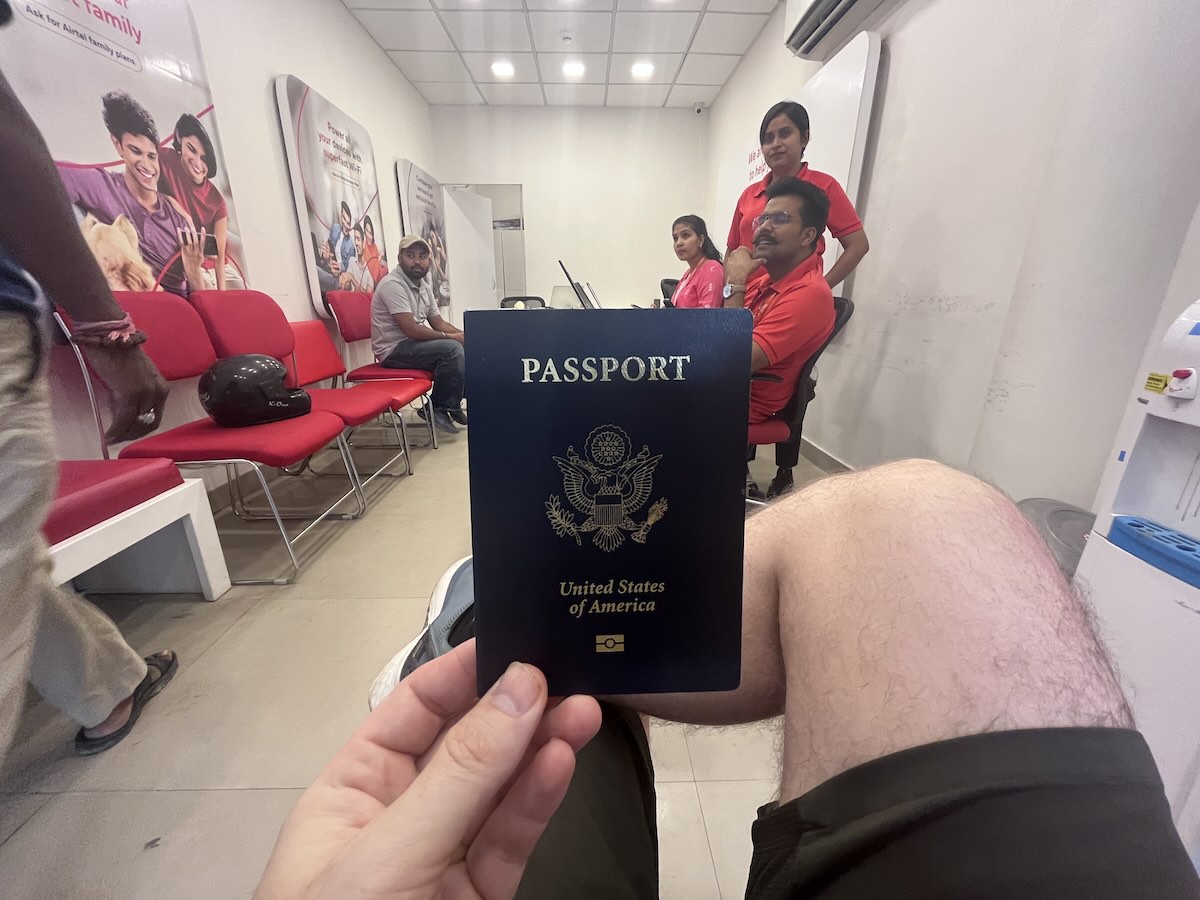
Pros:
- Cheap
- Easy to find on Google Maps
- You get a phone number and data
- More options for SIM companies
Cons:
- Takes longer
- They may not know what to do with foreigners and refuse to help you
- Need an Indian reference number
You will need: Passport, visa, Indian reference number, and passport-sized photos.
You can search the major cell companies (Airtel, Vodafone, and Jio) on Google and head to an official store to apply for a sim card.
This is good because you can find them on Google Maps and won’t have to ask around. However, I’ve only done this once in Panchkula, which was a bit problematic.
The employees hadn’t worked with a tourist before, so it took a little convincing. Since they weren’t that used to the process, it took longer as the employees worked together on it.
You need to bring a passport-sized photo along with your passport and visa.
I needed an Indian reference number, which I didn’t have. Fortunately, one of the customers did it, and the employees didn’t mind trying that. I’ve also messaged past hotel and Airbnb hosts, and some have agreed to be contacted, which is a good reason to make some friends.
Uber’s a helpful way to check taxi prices and get cheaper prices in big cities.
Can You Use Your Foreign Number in India?
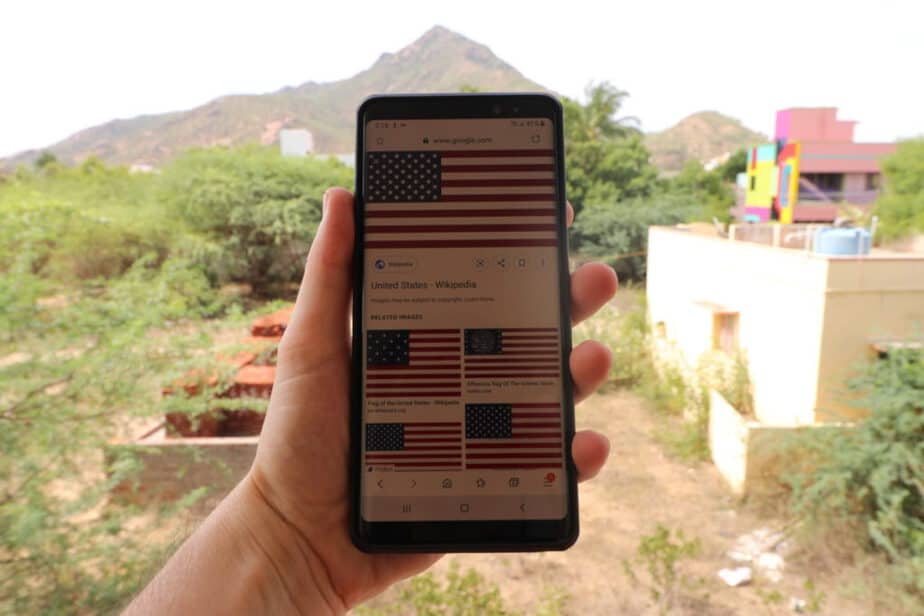
Major networks will let you pay extra and use your foreign number.
- ATT’s International Day Pass: $10 a day from the. You can use data, text, and call as much as you need.
- Verizon’s International Plan: $10 a day from the USA. You can use data, text, and call as much as you need.
If you’re only on a short trip and won’t call much, this is an okay backup option. But I personally think everyone should go with the local SIM card or at least the eSIM. If you’re on a 10-day trip, you can save $100 with a local SIM and get an epic dinner for $100 in India!
I used ATT’s international plan on my first trip and spent almost $200, which is why I researched the local SIM cards and never paid that expense again.
Frequently Asked Questions
Does an Indian SIM card work with US phones?
Your phone must be compatible with the GSM network to work in India. AT&T and T-Mobile mostly use GSM. Verizon usually uses CDMA, which might not work. You can search Amazon for “International phones” to get a compatible phone.
Which SIM Card has the best coverage in India?
Jio has the most coverage, and Airtel is second. I’ve used Airtel, Vodafone, and Jio, and Airtel has been my favorite since it’s easier to get than Jio. Vodafone works well in some areas, but I had problems with it not working when I went to a new state, which isn’t ideal for travelers. My Airtel SIMs have continued working from state to state.
What’s the best SIM card for tourists in India?
Airtel has a good range and more locations, and getting a SIM card is easier than Jio, which is the second-best option. Vi is solid but has less network and is available in fewer places. BSNL is a government network that requires more paperwork and takes longer. It’s available in more rural places, so it might be worth it if you’re heading off the beaten path.

